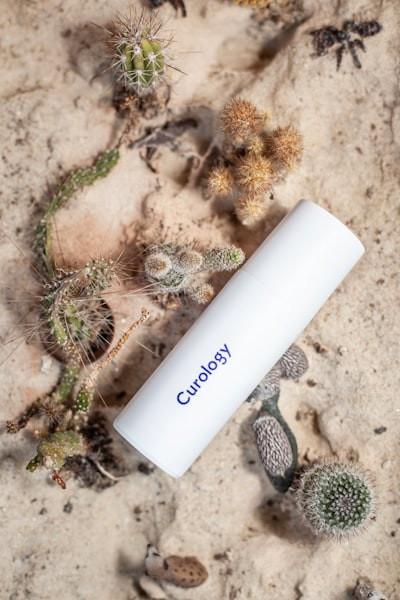Get Your Product Used: Adoption and Appropriation
Curated from: interaction-design.org
Ideas, facts & insights covering these topics:
9 ideas
·884 reads
6
6
Explore the World's Best Ideas
Join today and uncover 100+ curated journeys from 50+ topics. Unlock access to our mobile app with extensive features.
Useful, Usable and Used have different meanings
Useful = allows a user to accomplish an objective in a certain context
Usable = useful + enablement of the user to perform an action
Used = useful + enablement + adoption. The ultimate goal of a product.
20
377 reads
Ease of Use
Some questions to guide
- Life goals – what does the user aspire to in their life? How might your product get them to that goal? What would motivate a user to choose your product over a competing product that achieves this objective?
- Completion goals – what do users expect to happen at the end of using your product? What can you measure when this takes place?
- Behavioral goals – when users undertake achieving the goal without using your product, how do they do it? How can your product mimic that process so that the product is familiar to them?
19
122 reads
Usability
Oftentimes, usability is mistaken with user experience, but in reality, it is just a part of it.
Usability, on its own, is also not only ease of use, but rather a sum of multiple aspects:
- effectiveness - the ability to complete a task
- efficiency - effectiveness + speed
- engagement - looking right (typography, navigation)
- error tolerance - preventing users to do errors
- ease of learning - appropriate onboarding on a product or learning about new releases
18
114 reads
The 7 Factors of User Experience
Imagine a product has 7 different buttons, that whenever pressed with low or high intensity, they produce different results for users:
- Useful - has a purpose in the user's life
- Usable - enables the purpose of a product to be brought to reality
- Findable - the product and its content are easy to find
- Credible - has built trust that it can accomplish the promised purpose
- Desirable - good brand, image, identity, aesthetics and emotional design
- Accessible - a product's ability to be used by as many people as possible (e.g. impaired people)
- Valuable (its production costs don't outweigh its usefulness)
25
108 reads
Factors of success for new product development
- Top Management Support: Getting resources from top management to test innovative ideas
- Market Orientation: Ability to conduct user and market research to bring them closer to the need of users
- Technology: Suitable for the market selected
- Knowledge management: Information sharing between teams helps bring down the knowledge silos
- Development Strategies: Teams can negotiate and bring input to the roadmap
- Development Speed: Being fast enough to provide value ahead of competitors
- Development Process: Clear processes for design and development
- Product Teams: Bringing different input for the product
16
38 reads
Turning prospects into users
Adoption is the ultimate goal of a product. For it to happen, the Product works with the marketing teams:
- Pre-Design Phase: Market research determines if the user base is large enough to make a product profitable; user research looks into its value & usability.
- Design Phase: Designers ensure the product is desirable & usable, and marketers work to release news and build anticipation for the release.
- Launch Phase & Beyond: Involve channel partners, distributors, influencers to spread the word; press releases, social media, free trials where possible. Get meaningful metrics to measure adoption.
17
25 reads
Appropriation
Appropriation can have two meanings:
- the usage of existing objects to create different contexts than originally thought (e.g. dressing in clothes from another culture)
- the usage of a product in an unintended way (e.g. using a block of cement instead of a hammer with a nail).
It is desired that companies look to integrate their products in other contexts to attract more users, but should pay attention to copyrights issues.
15
29 reads
Using the Product Lifecycle
There are different stages of a product and different strategies apply to each of them:
- Market Introduction: High costs, low sales, little competition, customer education, marketing investment, low profitability
- Growth: Declining costs, higher sales volumes, profitability appears, brand awareness, competitors appear
- Maturity: Declining costs, sales at peak, more competitors, brand differentiation needed, profitability declines
- Decline: costs not optimal, sales decline, prices fall, profitability depends on efficiency of production and distribution
17
40 reads
Types of product adopters
There are different types of adopters at each product stage:
- innovators: like taking high risks and have a good discretionary income. Naturally knowledgeable in the product space. Marketing and UX teams should identify them before launch to design for mass scale
- early adopters: influential, thought leaders in the product space, educated in social media, with high level of education and reasonable income
- early majority: risk averse, like to compare products before buying, lower income than the first 2
- late majority: skeptical, like to use trial and tested products
- laggards: don't like change
17
31 reads
IDEAS CURATED BY
User Researcher, passionate about behaviours and building the right products. I 'stash' about research, self-development and education.
CURATOR'S NOTE
Having a used product is more important than product market fit and usability
“
Magda Mihalache's ideas are part of this journey:
Learn more about personaldevelopment with this collection
How to prioritize tasks effectively
How to manage your time efficiently
How to reduce stress and anxiety
Related collections
Similar ideas
5 ideas
Gamification - How to Create Engaging User Experiences
interaction-design.org
5 ideas
A Simple Introduction to Lean UX
interaction-design.org
4 ideas
Read & Learn
20x Faster
without
deepstash
with
deepstash
with
deepstash
Personalized microlearning
—
100+ Learning Journeys
—
Access to 200,000+ ideas
—
Access to the mobile app
—
Unlimited idea saving
—
—
Unlimited history
—
—
Unlimited listening to ideas
—
—
Downloading & offline access
—
—
Supercharge your mind with one idea per day
Enter your email and spend 1 minute every day to learn something new.
I agree to receive email updates







